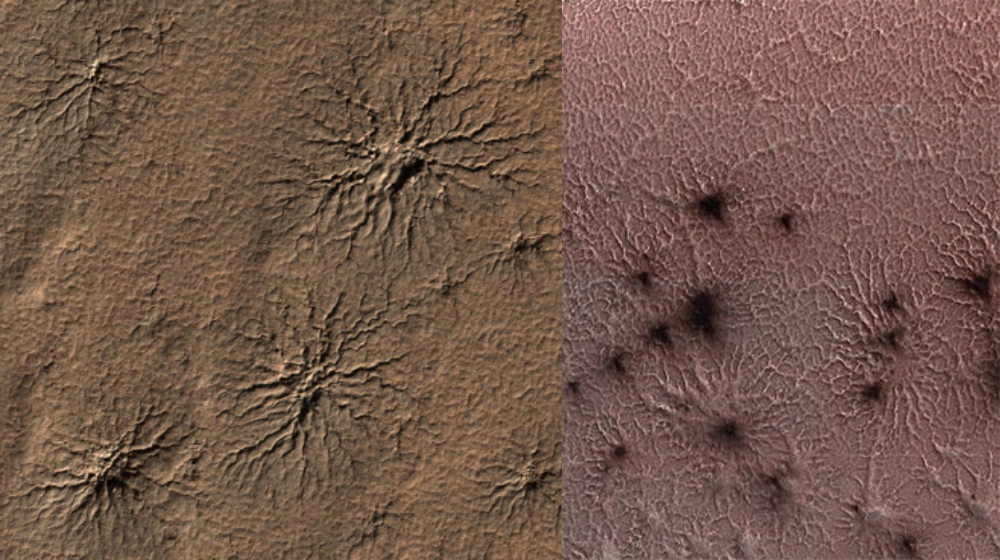‘Spiders from Mars’ or ‘araneiforms’ were first seen 20 years ago. Now we finally know what they are, and it’s not spiders.
These spindly patterns aren’t arachnids, just carbon dioxide vapors escaping from cracks in polar ice during the Martian spring.
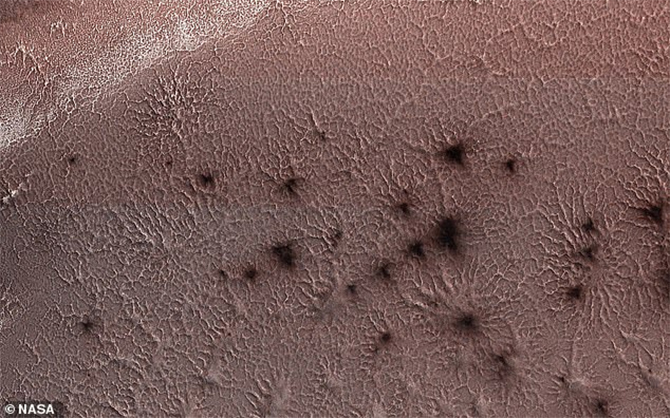
Image Source: NASA
ALSO READ
These Microscopic Living Creatures Can Survive On The Moon
What looked like long-legged creatures escaping the frost amid the thaw of spring in Mars, are just CO2 vapors. So why are these ‘araneiforms’ created. According to DailyMail, it’s hypothesised when sunlight reaches through the translucent ice covering Mars’ poles each spring. The heat permeates the loose rock below and builds up pressure.
That pressure causes the ice to crack and vaporized carbon dioxide to escape forcefully, blasting sand and grit into the air. As the grit settles on the surface of the ice it looks like spider legs, or tree branches. The CO2 transitions directly from solid to vapor the pressure is that great.
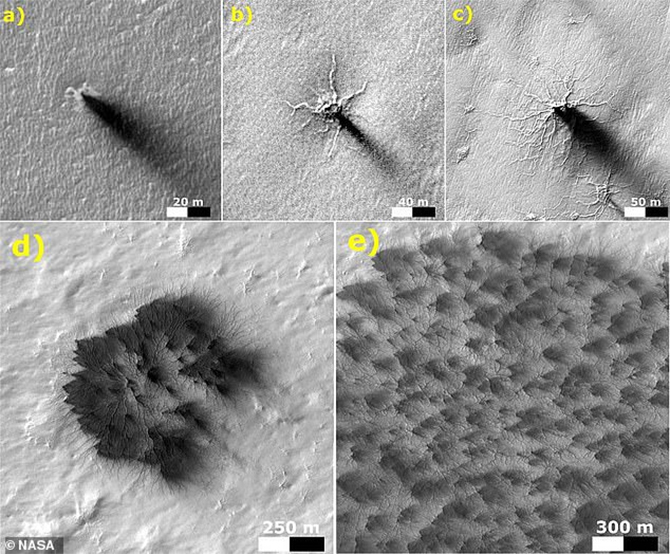
A researcher at the Open University and lead author of a study published in Scientific Reports, Lauren McKeown, Lauren McKeown and her team finally figured it out. These researchers figured this out via simulation of conditions on Mars’ surface.
Lauren McKeown and her colleagues from Ireland and the United Kingdom recreated Martian atmospheric conditions in the Open University Mars Simulation Chamber in Milton Keynes, England.
Blocks of dry ice, which is frozen CO2 was lowered onto beds of gravel. They drilled holes in blocks of dry ice, and suspended them above beds of various size granules. Under the same pressure, the same spindly patterns emerge on the surface.
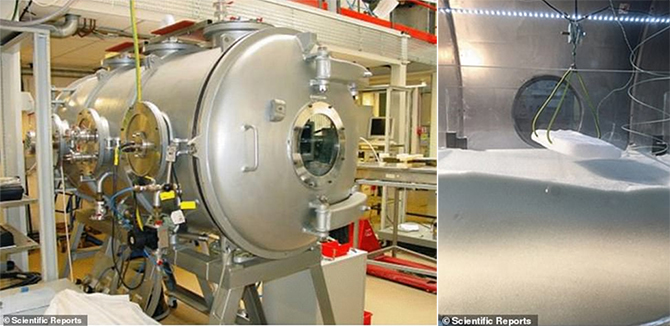
The study in Scientific Reports revealed that the finer the sediment , the more branches the patterns had.
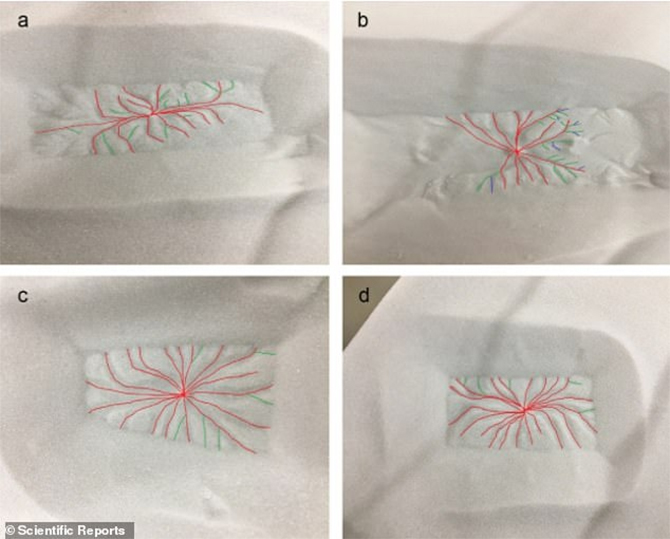
ALSO READ
NASA Says We Can Produce Water on the Moon
Lauren McKeown said how ‘until now, it has been framed in a purely theoretical context’. She and her team finally solidified this explanation with their simulation.
“Mars Reconnaissance Orbiter and other satellites have captured araneiforms, and the theory that they’re caused by escaping CO2 ‘has been well-accepted for over a decade,’”
She called the discovery ‘exciting,’ because scientists are finally beginning to understand more about how the surface of Mars changes each season.



